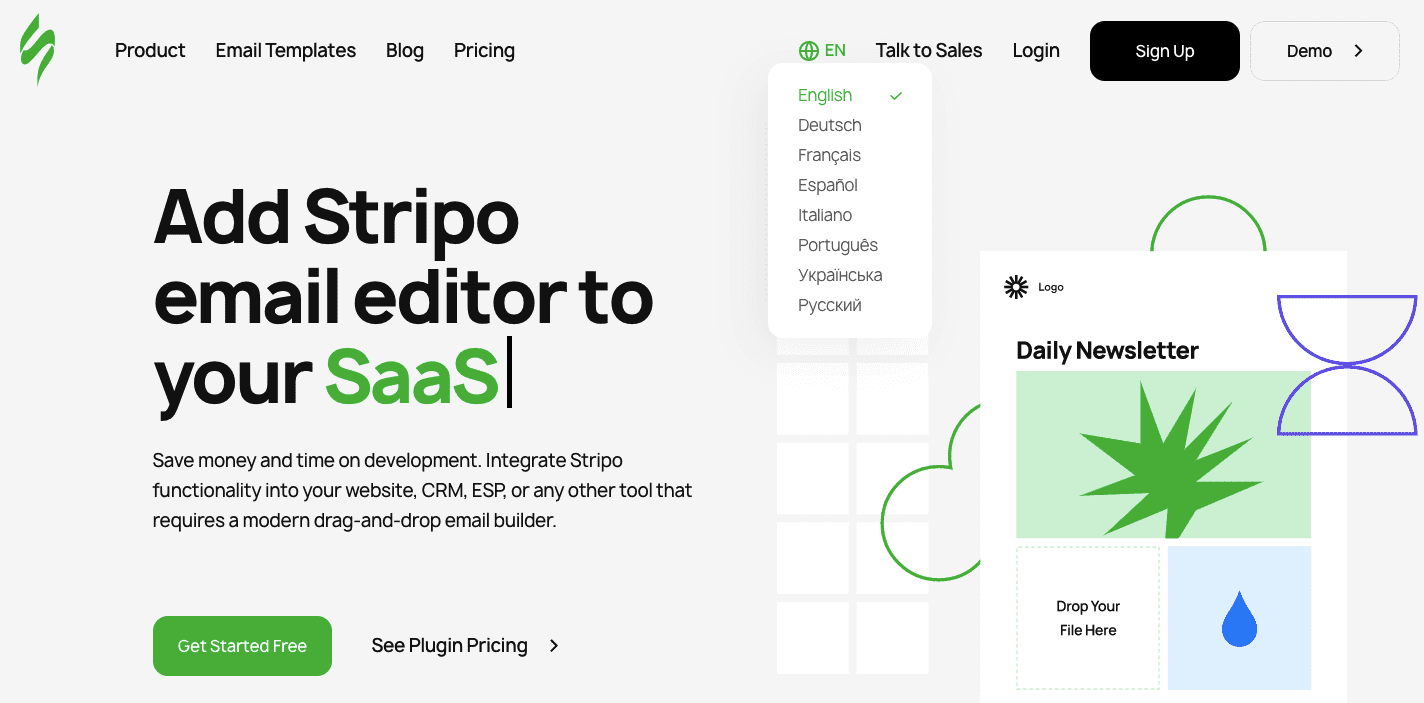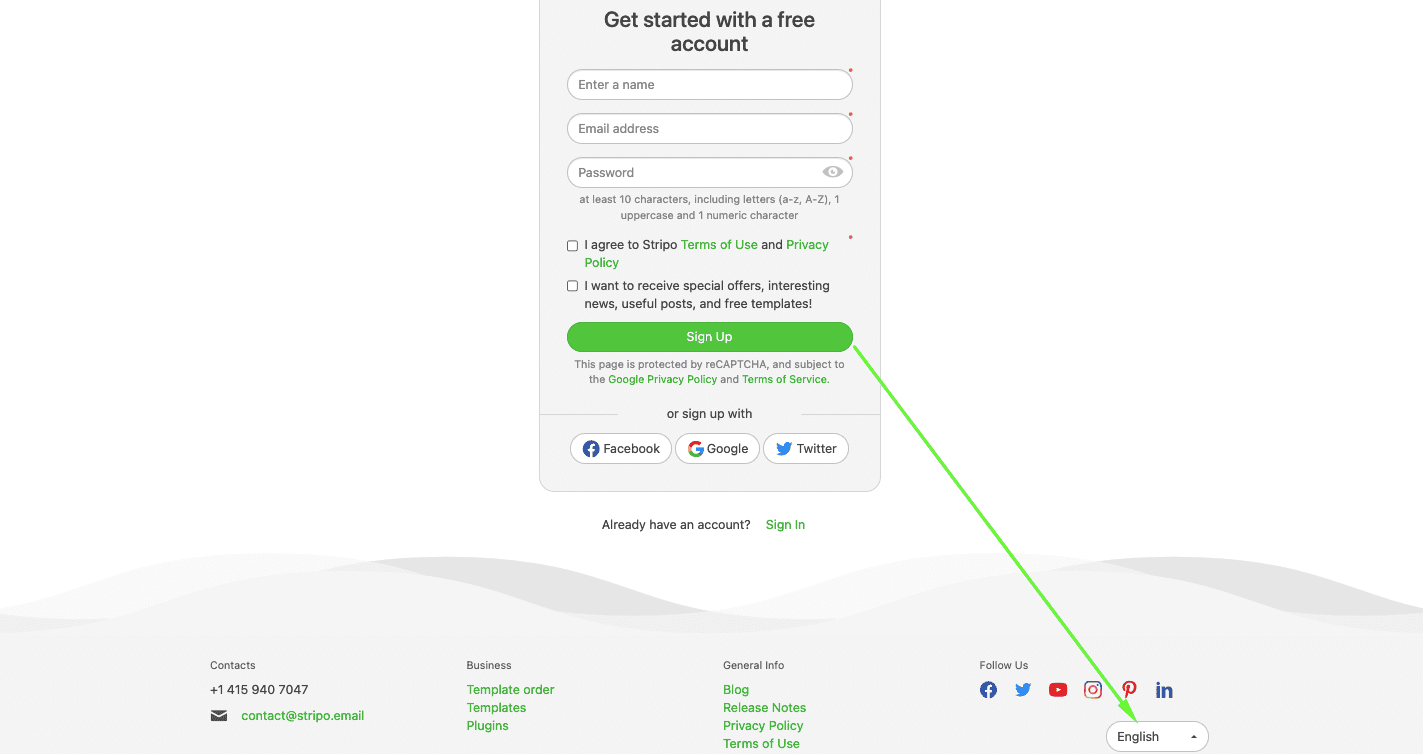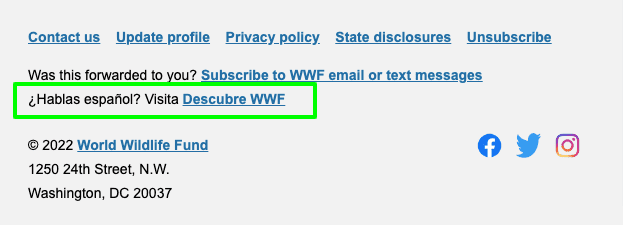The main thing to do when sending emails in a few languages is to detect the recipient’s language.
Mathias Ditlev, CEO of Onlime.
In the previous article on “Multilingual email marketing,” we’ve established that it is crucial for businesses to speak with recipients in their native languages.
But where do we start our journey to multilingual email marketing? Detecting the language preferences of each and every person in our contact base is the first step here.
Ways to detect your subscribers’ language preferences
There are currently three ways to do that:
-
Getting the language preferences from the site/browser locale.
-
Asking users during the registration/subscription process.
-
Allowing recipients to update their language preferences anytime.
Let us examine each of them.
1. Getting the language preferences from the site locale.
This way has three options:
Option 1. Parsing a user’s web browser locale automatically
Have you ever noticed that when you go to a website localized into eight languages, you see the content in your native language (or the one you set in your browser settings if it differs from your mother language)? This happens because the website can “read” your browser settings and automatically show the content in a necessary language. They do it to minimize your steps to access the content.
Suppose you visit this website again from the same device or subscribe to their newsletters. In that case, you’ll receive emails in your language because your language preferences are stored in your user profile on this website.
You do the same for your multilingual email marketing — you detect users’ browser settings, read their “language,” and record it.

How to detect users’ language preferences:
-
add a script to your website code and parse the user’s browser locale;
-
deliver this data to your ESP or any third-party storage;
-
show content in the necessary language.
Option 2. Asking users to set “Language preferences” manually
When users visit your website, they may choose the language to read the content in if they have such an option.

How to detect users’ language preferences:
Option 3. Using a visitor’s location
No matter whether your recipients use mobile or home Internet, you can still detect their location.
How to detect users’ language preferences:
-
use an IP address lookup and geolocation tool. All IP addresses are associated with particular countries and cities;
-
use HTML 5 geolocation API. Given that this method requires the user’s permission — they can allow or decline to share their location — it is mostly used by companies that need to provide a kind of service based on location, such as delivery services like Glovo and weather forecasts;
-
use Google Analytics with your site. Here, Google can:
-
detect a visitor’s IP address;
-
analyze the visitor’s past activity to detect IP address;
-
analyze the visitor’s devices. Remember, we quite often have the Geo Location option on our devices.
2. Asking users during the registration/subscription process.
When new user/subscriber registers on your website or subscribes to your newsletters, you can allow them to set their language preferences right in the registration/subscription form.

Registration form, Stripo

Dolce & Gabbana
How to detect users’ language preferences:
3. Allowing recipients to update their language preferences at any time.
Sometimes the languages you use for email campaigns are not aligned with your website. For instance, at Stripo, we first add new languages to the editor because this is the tool people use. So this is essential. Later, we add those languages to the website. And only then we use them in email communication with clients.
Of course, at first, we communicate with users in English, our default language, even if they use another language in the editor. Over time, when adding their preferred language to email communication, we must ensure the user is ready for these changes. So, by asking them if they want to receive emails in their native language, we both inform them we will speak their native language so we don’t shock them and let them choose if they want these changes.
So, you should stick to this way when:

World Wildlife Fund
-
when you’ve previously spoken to users in another language, and now you’re adding their native language to your email marketing strategy, like in the case described above;
-
it is always a good idea to enable recipients to update their language preferences.

HubSpot
These ways are not mutually exclusive, so you’d better try to detect users’ language preferences and let them set the language independently.
Wrapping up
We’ve described three core ways to detect your customers’ language preferences for your email communication.
If you know of another one, please share it with us in the comments below. We will be happy to examine it.
Build multilingual email campaigns for your customers with Stripo

